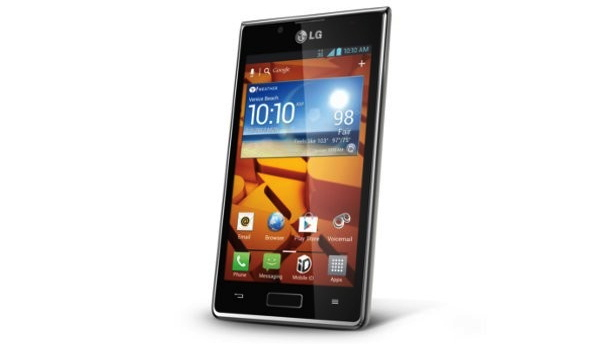TechRadar Verdict
Pros
- +
The Venice is cheap and so is its plan
- +
Runs Ice Cream Sandwich
- +
Optimus skin is solid
Cons
- -
Sluggish performance
- -
Mediocre display
- -
Unremarkable camera
- -
No 4G LTE
Why you can trust TechRadar
While devices like the HTC One and the forthcoming Samsung Galaxy S4 carry the Android banner to powerful and sophisticated new heights, there remains a strong market for lower-end handsets that don't require a huge upfront expense or long-term contract to reasonably obtain.
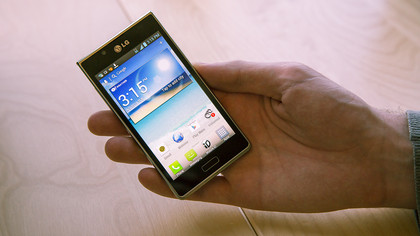
Enter the LG Venice, an Android 4.0: Ice Cream Sandwich smartphone that's sold contract-free through Boost Mobile. Neither its build nor its internals stack up against the top Android offerings from this year or the last, plus it's stuck with a 3G connection. But it's a fair device for casual users to consider, since Boost's plans are much cheaper than those of traditional carriers.
Design
The LG Venice sports a simple and unassuming front, with the 4.3-inch touch display – at a resolution of 800 x 480 – surrounded by a black border with an LG logo and small front-facing camera up top, along with a physical button at the bottom. When powered on, additional Back and Settings touch buttons light up on either side of the physical one.
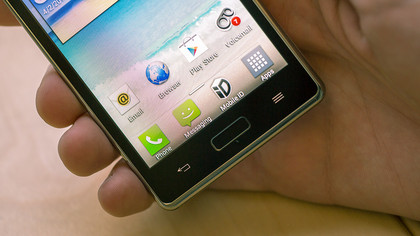
Unfortunately, but unsurprisingly for the cost and components, the Venice's screen disappoints with visible pixels throughout, which are particularly eye-catching with some of the icons and while playing games. It's not a poor display; in fact, it's quite bright with solid contrast, but the lack of clarity is notable even for a lower-cost device.
On the flip side, the textured faux-metal plastic backing is a definite eye-catcher, though while distinct it can't help but look a bit chintzy. It almost looks like a cigarette or business card holder from the 60's, and it's rather unique among Android handsets, but also feels a bit cheap and will no doubt look tacky to some.
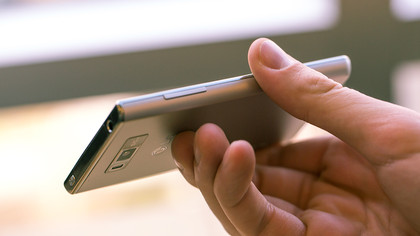
And while this isn't a problem that most prospective buyers of the LG Venice will encounter, we advise keeping that backing away from the screens of other phones. We had the Venice alongside an iPhone 5 in a pocket for a span, and the latter emerged with swirls of small scratches on the screen from the LG's backing. If you carry two phones and are considering the Venice, keep it in a case or a separate location – take our word for it.
Also on the back is the 5.0 megapixel primary camera lens with a flash. On the top of the phone, you'll find a power button and a headphone jack, while the bottom holds the mini-USB output. The left side of the phone houses the volume rocker.
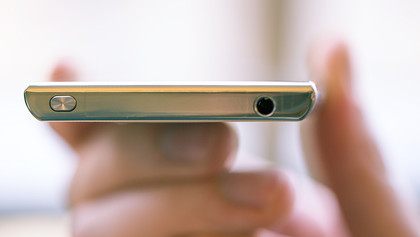
The profile of the LG Venice is little boxy and unrefined, with dimensions of 4.92 by 2.64 inches, but it is pretty slim at a thickness of 0.34 inches while the weight is kept low at 4.41 ounces. Between the large plastic back panel and the faux-metal sides and top, though, the build doesn't feel remarkably sturdy, but it's not quite in danger of being snapped in half, either.
With just a single-core 1Ghz processor and 768MB of RAM, it's very much on the lower end of the smartphone pool, and it shows with occasionally sluggish navigation between apps, as well as decreased performance on games. It's not a phone for power users who aim to flit between apps and run high-end apps and games. It simply can't keep up.
The LG Venice is listed at $199.99 without contract, though we've seen it cheaper of late, and Boost Mobile – which uses Sprint's network – offers monthly unlimited plans at $55 that drop in price the longer you keep them paid up, along with optional daily unlimited plans.
